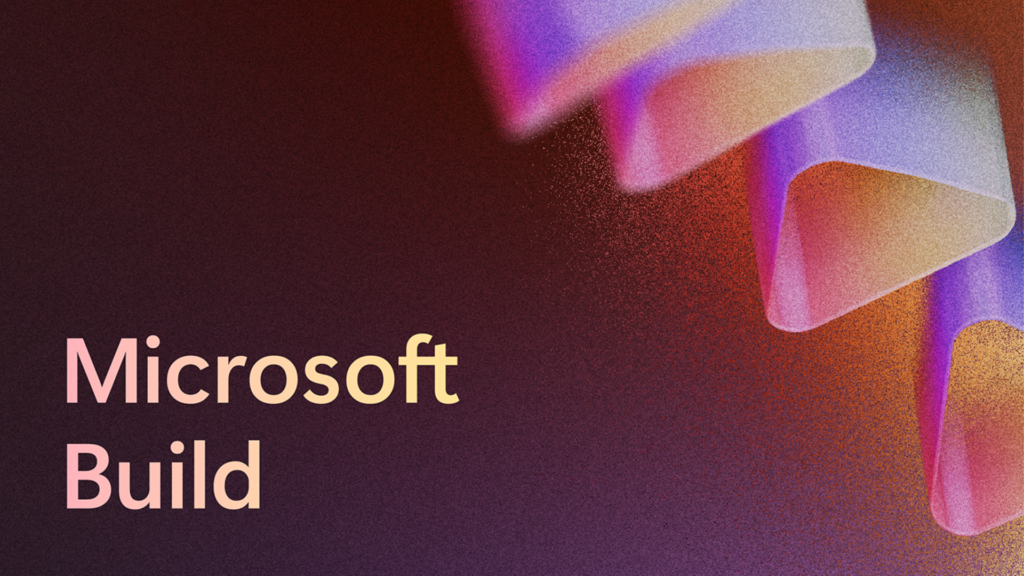Let's Master AI Together!
Microsoft Build 2025: The Age of AI Agents and Building the Open Agentic Web
Written by: Chris Porter / AIwithChris

Image Source: Microsoft Blog
Revolutionizing Digital Interactions: The Rise of AI Agents
As we step into the future of technology, the landscape continuously evolves to meet the demands of users seeking more intelligent and versatile solutions. With Microsoft's recent announcement at Build 2025, they have effectively positioned themselves at the forefront of this revolution with a compelling vision for an “open agentic web.” This is more than just a buzzword; it encapsulates a future where AI agents become indispensable tools in our everyday digital experiences.
Microsoft introduced the concept of AI agents that are capable of autonomously performing tasks, making decisions, and collaborating within various ecosystems. Imagine having a virtual assistant that not only understands your requests but can also interact seamlessly with other agents across platforms to deliver complex solutions with minimal input from you. This evolution aims to enhance user productivity and engagement and manage workloads efficiently.
What really sets this initiative apart is the integration of Google’s Agent2Agent (A2A) protocol, which fosters seamless communication between AI agents from different ecosystems. This means that these agents can communicate directly, share goals, and coordinate actions seamlessly, overcoming the traditional barriers that often hinder the efficient exchange of information. In an era where collaboration is key, this feature could mark a significant step forward in how digital interactions unfold.
Unveiling the Azure AI Foundry
To further facilitate this paradigm shift, Microsoft has introduced the Azure AI Foundry, a unified platform that boasts over 1,800 models and sophisticated tools aimed at developers. This platform is critical for those looking to harness the full potential of AI agents, enabling them to design, customize, and manage AI applications effectively.
The Azure AI Foundry breaks down traditional barriers of AI deployment, offering a comprehensive suite of resources that developers can leverage to create advanced AI solutions. With its robust feedback system, developers can access real-time telemetry and user feedback, ensuring that applications continuously evolve based on actual user interactions and requirements.
This adaptation reflects a growing recognition that AI agents must improve through real-world application. By gathering data and understanding user needs, Microsoft can help developers refine their AI applications, ultimately resulting in products that are more aligned with user expectations. The integration of AI agents is not merely about technological advancement; it is about enhancing the lives of everyday users through improved experiences.
Streamlining Development with the Agent Framework
Another significant announcement at Microsoft Build 2025 was the general availability of the agent framework, derived from Semantic Kernel, which is an open-source kit. This framework is designed to orchestrate multi-agent systems, dramatically reducing development complexity while enhancing the coordination of various agents.
In a world where countless applications and agents operate simultaneously, the ability to integrate their efforts seamlessly is crucial. Microsoft’s agent framework offers a structure that simplifies the orchestration process, allowing developers to focus on crafting solutions instead of wrestling with the complexities of how various agents will interact. It provides a necessary backbone for an interconnected digital ecosystem.
For businesses and developers looking to harness the power of AI agents, this framework opens new doors. It allows greater flexibility in design while fostering an environment where collaboration is not just possible but optimized. This sets the stage for innovative applications that can enhance user engagement and productivity across diverse sectors.
Empowering Businesses with Interoperability
Interoperability is a foundational concept of the open agentic web and serves as a key driver behind Microsoft's initiatives. With the Agent2Agent (A2A) protocol, developers are empowered to create robust AI agents that can communicate and collaborate not only within their native ecosystems but across a multitude of external platforms. This paves the way for innovative applications where AI agents can coordinate efforts to achieve overarching objectives.
For enterprises, the ramifications are immense. Businesses typically rely on various tools and platforms to manage their operations, each with its own set of agents and systems. The ability to create AI agents that interact seamlessly across these diverse environments means that workflows can be automated and streamlined in ways previously thought impossible. Organizations will benefit from quicker task execution, reduced errors, and a higher return on investment from their technology.
Additionally, this interoperability encourages the development of hybrid applications where features from multiple tools and services can be aggregated into a single cohesive user experience. As AI agents become more sophisticated and interoperable, users will have the advantage of sophisticated tools working in concert by utilizing complementary strengths.
The Future of Digital Engagement
As we look ahead, it is evident that the future of digital engagement will not merely revolve around static applications but rather dynamic systems that expand their capabilities through collaboration. Microsoft's focus on making AI agents capable of autonomous interaction emphasizes how future digital ecosystems will prioritize user-centric applications that cater to evolving needs.
The open agentic web, as envisioned by Microsoft, will transform how we interact with technology. Instead of just interfacing with applications, users will communicate within ecosystems enhanced by intelligent agents that understand context, manage tasks, and execute on their behalf. This shift encapsulates a more intuitive and user-friendly approach that is likely to enhance overall satisfaction with technology.
Conclusion: A Call to Embrace the Change
The announcements made during Microsoft Build 2025 signify an exciting era for technology, where AI agents are expected to dominate digital interactions. With initiatives like the Azure AI Foundry, interoperability through the Agent2Agent protocol, and the sophisticated agent framework, Microsoft is creating a roadmap for a highly interconnected digital future.
If you are a developer, business leader, or simply intrigued by the advancement of AI and its potential, now is the time to explore these technologies further. By embracing the principles behind the open agentic web, you can equip yourself and your organization with the tools necessary to thrive in this new landscape. For more insights and in-depth discussions on AI, visit AIwithChris.com, where you can discover the latest trends and innovations shaping the world of artificial intelligence.
_edited.png)
🔥 Ready to dive into AI and automation? Start learning today at AIwithChris.com! 🚀Join my community for FREE and get access to exclusive AI tools and learning modules – let's unlock the power of AI together!
